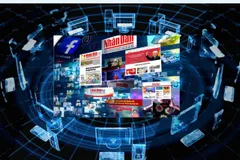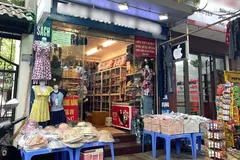
The article mentioned that the State Bank of Vietnam quickly lowered the operating interest rate to reduce deposit and lending interest rates, and continuously directed other banks to also reduce deposit rates quickly. However, the directive of the State Bank of Vietnam has largely been ignored because commercial banks have fallen into a vicious cycle of bad debt, liquidity concerns, and low-interest rates.
Saigon Investment later published yet another article reflecting on the Government's request to the State Bank of Vietnam to continue reducing the operating interest rate in June and move to reduce interest rates for credit institutions to support businesses.
Recently, a more cheerful sign was seen when commercial banks simultaneously lowered the deposit interest rate to below 9 percent per year. However, the downside is that banks only seek to lend to customers with risk-free conditions. But in the current difficult economic situation with production and business enterprises having low or no output, it is difficult to find a risk-free enterprise. Market law is also reversed when interest rates rise and credit grows negatively, or when interest rates fall and credit increases. Vietnam is experiencing slow credit growth while interest rates are falling rapidly. In the first half of 2023, new outstanding credit increased by 4.2 percent in the direction of full-year credit growth of 14 percent to 15 percent.
Looking at the current credit situation, the State Bank of Vietnam also acknowledges the fact that many businesses want to borrow but cannot prove their ability to repay, while the principle of minimum lending by banks must be to collect debts. On the contrary, there are businesses that are offered loans by banks but have no need for any loans. In other words, the current credit door is only open to healthy businesses. But looking back at the economy, the small and medium-sized enterprises sector, which is weak and facing difficulties in capital resources and needs to borrow but is then not eligible for loans and must also accept the high-interest rates.
Commercial banks also only follow the rules of the market regarding low-risk and low-interest rates or high-risk and high-interest rates. However, at present, the difficult economic situation is leading to a decline in investment demand, low consumption demand, and businesses and production negatively affected from inside and outside which is leading to a lot of inventory, so high interest rates will put more burden on them and may even destroy their motivation to exist. It is at this time that risky businesses desperately need flexible support and the removal of financial stress to keep their strength to overcome difficulties.
Also, credit growth is low, but banks show no signs of reducing input capital mobilization. So, what is the bank using that money for is the question. It is possible that the bank will lend to its own backyard businesses or lend to the ecosystem backing the bankers. Because usually, banks will not be able to leave money in the safe. In fact, credit growth in the whole economy is low, but some banks soon used up more than half, even though most of the credit room was granted for the first time only in the first quarter.
If there is such a case, the policy of lowering the operating interest rate facilitates the bank to mobilize cheap capital, then the State Bank of Vietnam opens the credit room for the whole year, but it does not serve the economy as expected by the Government. On the contrary, it only creates conditions for banks to mobilize cheap capital for backyard crony loans.
So, along with the policies to remove difficulties from the management agency, it is necessary to have an open mechanism to support the business community, especially production and business enterprises. There should be separate regulations and conditions for loans for each industry and a more flexible lending mechanism. If only talking about trying to reduce interest rates, it is still the old situation where the Government is requested, the State Bank of Vietnam is directed, and the bank then promises and businesses continue to wait endlessly.




















